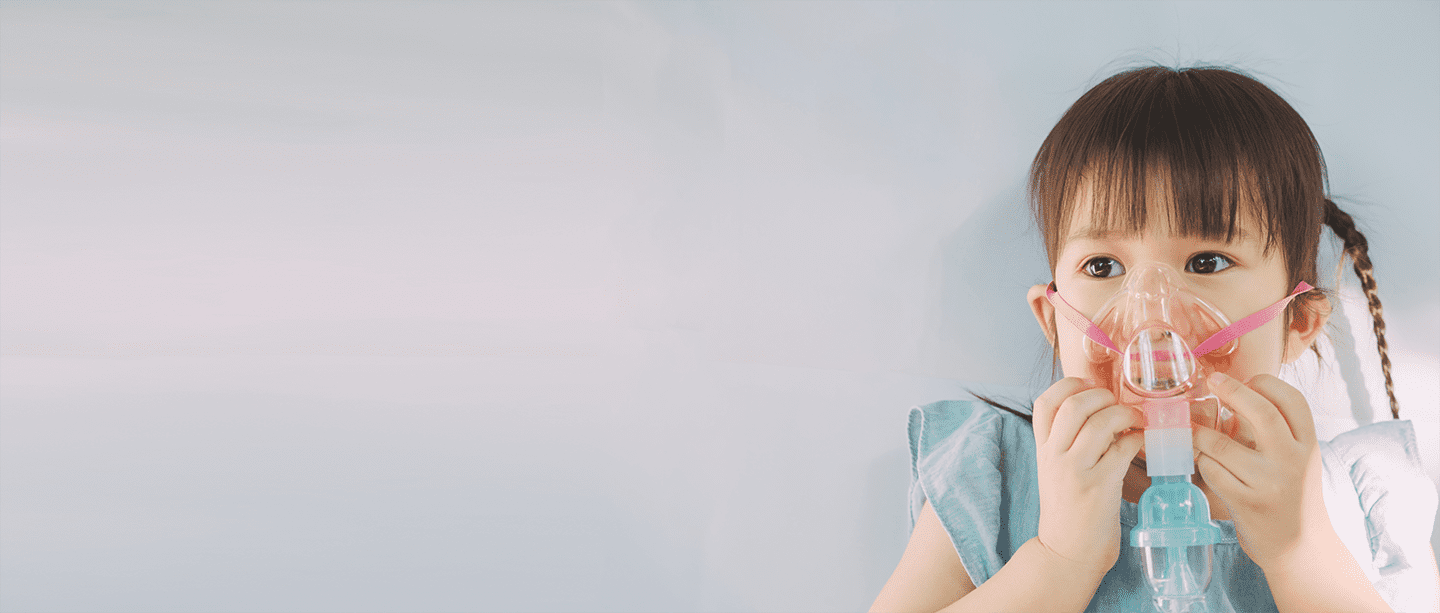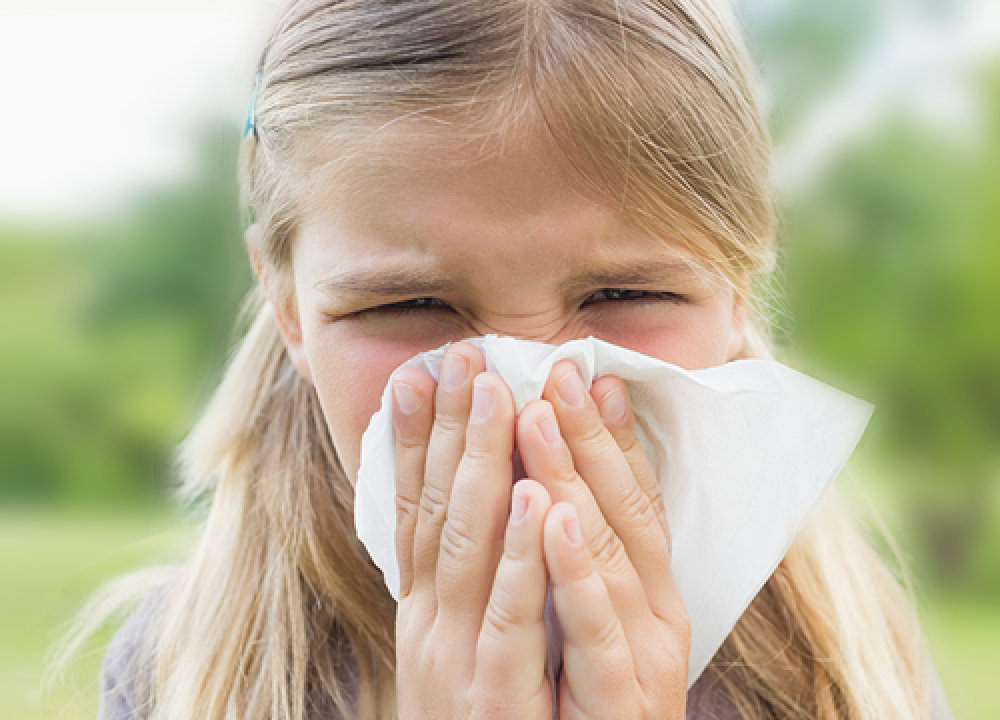
Asthma In Babies
The below content is derived from research done using sources available on the internet. Safey Medical Devices Inc and its subsidiaries do not take any responsibility for the accuracy of the content. No medical decision should be taken on the basis of below content without consulting with your Medical Practitioner.
It can be a challenge to diagnose asthma in your baby for many reasons. Read this handy guide to help you spot the signs and symptoms of asthma for your little one and useful ways in which to manage their condition.
When you think of Asthma, it may be surprising to learn that up to 80 per cent of children who suffer with the disease, started to get symptoms before they turned five.
And with as many as 1 million children in the UK being affected by this condition, many of whom can encounter varying symptoms, this can be greatly concerning as a parent or guardian.
With wheezing being the most common asthma symptom among older children and adults, the same can’t always be said for babies and many babies may have asthma without any wheezing at all.
On the other hand, there are many babies who will experience wheezing at some point in their lives, but won’t then go on to develop asthma.
As everyone who is diagnosed with asthma experiences the condition a little differently, it’s important to know the main signs and symptoms, in order to best help manage the condition.
Read on to find out symptoms, causes and the best course of treatment when it comes to asthma in babies.
What are the symptoms?
It can be difficult to diagnose babies with asthma, as their age makes it difficult for them to describe just how they are feeling.
It’s also important to know that a fussy baby could be be due to any number of things, and so may well not be attributed to asthma.
So, how to spot when it may be rearing its ugly head for your baby?
Well, if you notice your baby suffering from any of the following tell tale signs and symptoms, chances are, asthma is on the horizon:
Coughing constantly
A chronic cough is a tell tale sign of asthma
Wheezing
This could manifest itself as whistling. As mentioned, even though it’s one of the more common symptoms, your baby may not always experience wheezing with asthma. If your baby wheezes frequently but doesn’t have a cold, ask your GP for their opinion.
Shortness of breath
This could also be combined with fast or shallow breathing
Chest tightness
This can be difficult to spot and usually a reaction to an allergy
Bored breathing
You may notice your baby’s belly moving more than normal while breathing, and their nostrils may flare
Panting or heavy breathing
Particularly taking place during normal activities that usually don’t get your baby winded
Fatigue
Your baby may also have lost interest in some of their favorite activities
Difficulty eating or sucking
A blue tinge
Your baby’s face and/or lips may turn a pale shade of blue. Their fingernails may also turn blue
Is It Actually Asthma?
Whilst there are a whole host of asthma symptoms your baby can experience, these symptoms can mirror the signs of other illnesses and diseases.
The following conditions could well be an alternative diagnosis:
- Bronchiolitis
- Croup
- Acid reflux
- Pneumonia
- Upper respiratory viruses
- Aspiration
- Inhaled object
- Epiglottis
- Cystic fibrosis
- Birth defects
What are the Causes?
So, what factors could make it more likely for your baby to develop asthma?
There are certain activities or instances that could encourage the onset of asthma for babies.
These are:
☆ SMOKING ☆
- Particularly if you or your partner smoke. This can make your baby much more likely to wheeze compared with a baby in a smoke-free home.
- You smoked in pregnancy.
☆ WEIGHT ☆
- If your baby entered the world with a low birth weight or was born prematurely.
☆ GENES ☆
- If one, or both parents have asthma, or another allergic condition. This could lead to early asthma development compared to babies where the disease doesn’t run in the family.
☆ ALLERGIES ☆
- If your baby suffers with allergies already. This can range from skin conditions, such as eczema to a specific food allergy.
- If you notice patches of damp or mould in your house, your baby could well be affected and go on to form an allergic reaction. Asthma can then subsequently develop from these surroundings
The Asthma Predictive Index – shortened to API as it most commonly known to healthcare professionals – is a useful tool when it comes to determining which small children will likely have asthma in later years.
High-risk children (those who are under the age of three) who have had four or more wheezing episodes in the past year lasting longer than a day and affecting your child’s sleep, are much more likely to have persistent asthma after the age of five, if they have either of the following:
One major criteria:
- A parent with asthma
- A doctor’s diagnosis of atopic dermatitis, or eczema.
- Evidence of a sensitive response to particular allergens in the environment. For example, skin tests or blood tests to confirm an negative reaction to allergens from trees and grasses to moulds, pet dander and dust mites.
OR
Two minor criteria:
- Food allergies
- Less than 4 percent blood eosinophilia – an increase in the numbers of white blood cells, known as, eosinophils are made by the body as a handy way to fight off allergic diseases, which can cause damage to the airways of the lung.
- Wheezing, except in the case of viral infections, such as colds
How Are Babies with Asthma Diagnosed?
Diagnosing a little one, particularly one who can’t quite voice their feelings yet, can be a tricky task for doctors.
So, it’s always helpful to provide your child’s GP with the following important information, to help them reach the correct diagnosis:
- Family history of asthma or allergies
- Your baby’s behavioural patterns
- Breathing symptom patterns, note the differences, if any between nighttime and daytime, when resting vs activities and reactions to any medications
- Any triggers to foods or other potential sources, such as pollen, mould, pet dander and chemicals
It’s also important to note that it may take a few trips to the doctor before you gain a diagnosis, as it is usually based on a pattern of symptoms over a period of time.
So make sure to keep on top of GP visits if you think your baby might be struggling with symptoms.
There are a few ways in which your doctor or nurse can quickly determine whether or not your baby is living with this debilitating condition.
Standard ‘lung function tests’ — often used to make a complete asthma diagnosis — are often not the way as they can be challenging to carry out on toddlers and young children.
In the case of your baby, the doctor may see how the child responds to medications to improve breathing. The doctor may order blood tests, allergy testing and chest X-rays to get more information in regards to the bigger picture.
Your GP should then be able to determine a diagnosis based on this information and refer you on to a lung specialist or ‘pulmonologist’ for further, tailored testing or treatment.
How is Asthma In Babies Managed?
Due to the very nature of asthma being a long-term, chronic condition, unfortunately there is no cure. A lot of children may find that their symptoms lessen as they get older, or that they eventually outgrow the condition.
But it’s important to take steps to be able to effectively manage your baby’s condition.
This can be achieved with specific medicines as prescribed by their doctors, alongside the avoidance or reduction of exposure to any known triggers. This can be difficult to do in regards to food and environmental triggers, but any reduction can be helpful for your baby’s lungs.
Your baby may be given a drug, also known as a reliever, to stop symptoms in their tracks. Usually blue in colour, and generally safe for babies, reliever inhalers are fast-acting and work to relax the muscles surrounding your baby’s narrowed air passages, widening them and ultimately helping them to breathe.
Little pink tablets, known as Leukotriene modifiers might also be adopted into a treatment plan.
This is usually the case when an inhaled corticosteroid treatment alone does not result in stable management alone.
Make sure to work with your doctor to find out a treatment plan that works in the best possible way for you and your little one.









